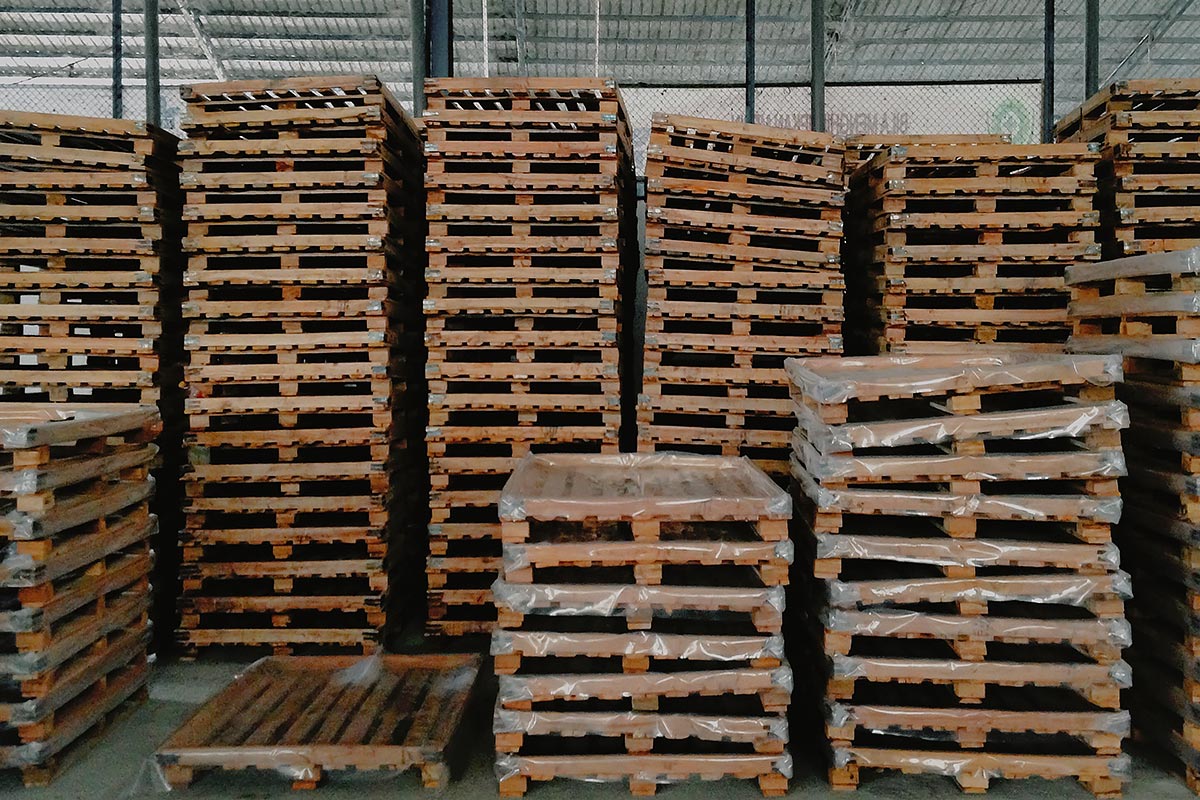The lifespan of a wooden pallet can vary widely based on several factors, including its usage, handling, and environmental conditions. Here’s a general overview of the factors that affect how long you can use a wooden pallet:
1. Usage and Handling:
- Load and Stress: Pallets used for heavier loads or subjected to frequent handling and movement will experience more wear and tear, potentially reducing their lifespan.
- Care and Maintenance: Proper handling and care can extend the life of a pallet. Avoiding rough handling, minimizing exposure to moisture, and regular inspections can help maintain its condition.
2. Environmental Conditions:
- Moisture Exposure: Wooden pallets exposed to moisture, such as rain or high humidity, are prone to deterioration, including swelling, warping, and mold growth. Proper storage in a dry area can extend their life.
- Pest Infestation: Pallets infested with pests like termites or beetles may have a shorter lifespan. Regular inspections and pest control measures can help prevent this issue.
3. Quality and Construction:
- Material Quality: Higher-quality wood and construction can lead to a longer-lasting pallet. Pallets made from hardwoods or with robust construction are generally more durable.
- Repair and Reinforcement: Pallets that are regularly repaired or reinforced can have an extended service life. However, extensive damage may require replacement.
4. Typical Lifespan:
- General Use: For standard warehouse or shipping use, wooden pallets might last from 1 to 5 years depending on the factors mentioned above. Pallets used in less demanding environments or for lighter loads may last longer.
- Inspection and Replacement: Regular inspections are crucial. If a pallet shows significant damage, such as cracked or broken boards, weakened structure, or safety issues, it should be replaced to prevent accidents and product damage.
5. Regulatory and Safety Considerations:
- Compliance: In certain industries, there may be regulations or standards for the condition and lifespan of pallets, especially for food or pharmaceutical products. Ensure compliance with industry-specific guidelines.
- Safety: Wooden pallets should be checked for splinters, sharp edges, or other hazards that could cause injury or damage.
6. Recycling and Reuse:
- Recycling: When wooden pallets reach the end of their useful life, they can often be recycled or repurposed. Wood from pallets can be used for various applications, such as mulch, compost, or crafts.
In summary, the lifespan of a wooden pallet can range from 1 to 5 years or more, depending on its usage, handling, and environmental conditions. Regular inspections and proper care can help maximize its longevity, and timely replacement is important for safety and efficiency.
How Do Companies Manage Their Pallets?
Many companies prefer to buy new pallets instead of used pallets for each shipment. Their products traveling safely on a new pallet is worth the small price. They most likely buy their pallets from a local pallet company. Users just need to be aware when ordering, that they get pallets that haven’t been used for any type of chemical transport. Companies don’t want to risk shipping consumable products on pallets that might have come in contact with chemicals or other agents. In these cases, most companies choose to buy and ship new rather than risk some type of contamination. Pallets end up seeing a lot of action and are frequently abused. Forklifts can easy gouge or snap a pallet into splinters. Broken pallets are either recycled or in most cases they can be rebuilt. This is also a job for your local pallet company, such as AAA Pallet & Lumber Co.






